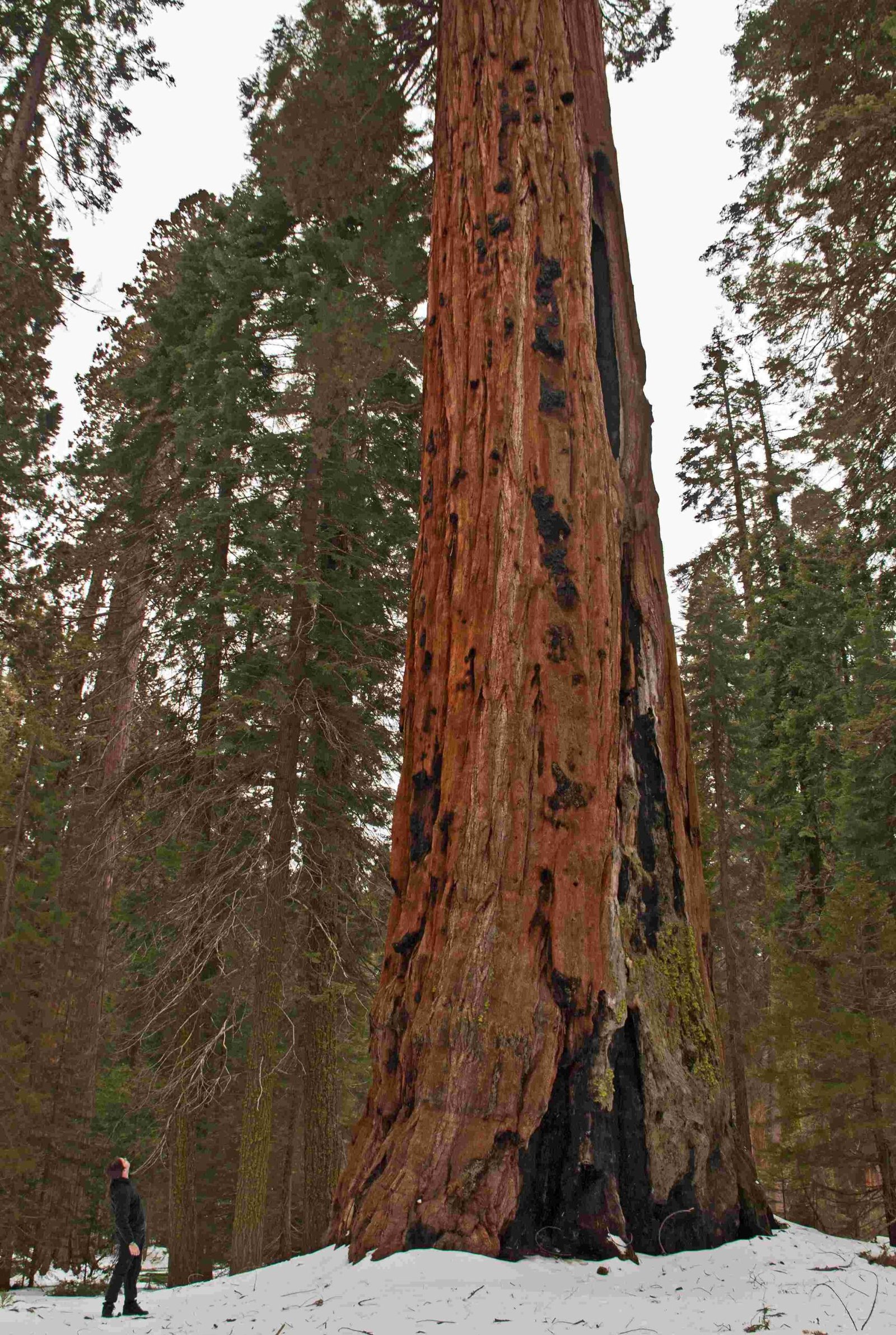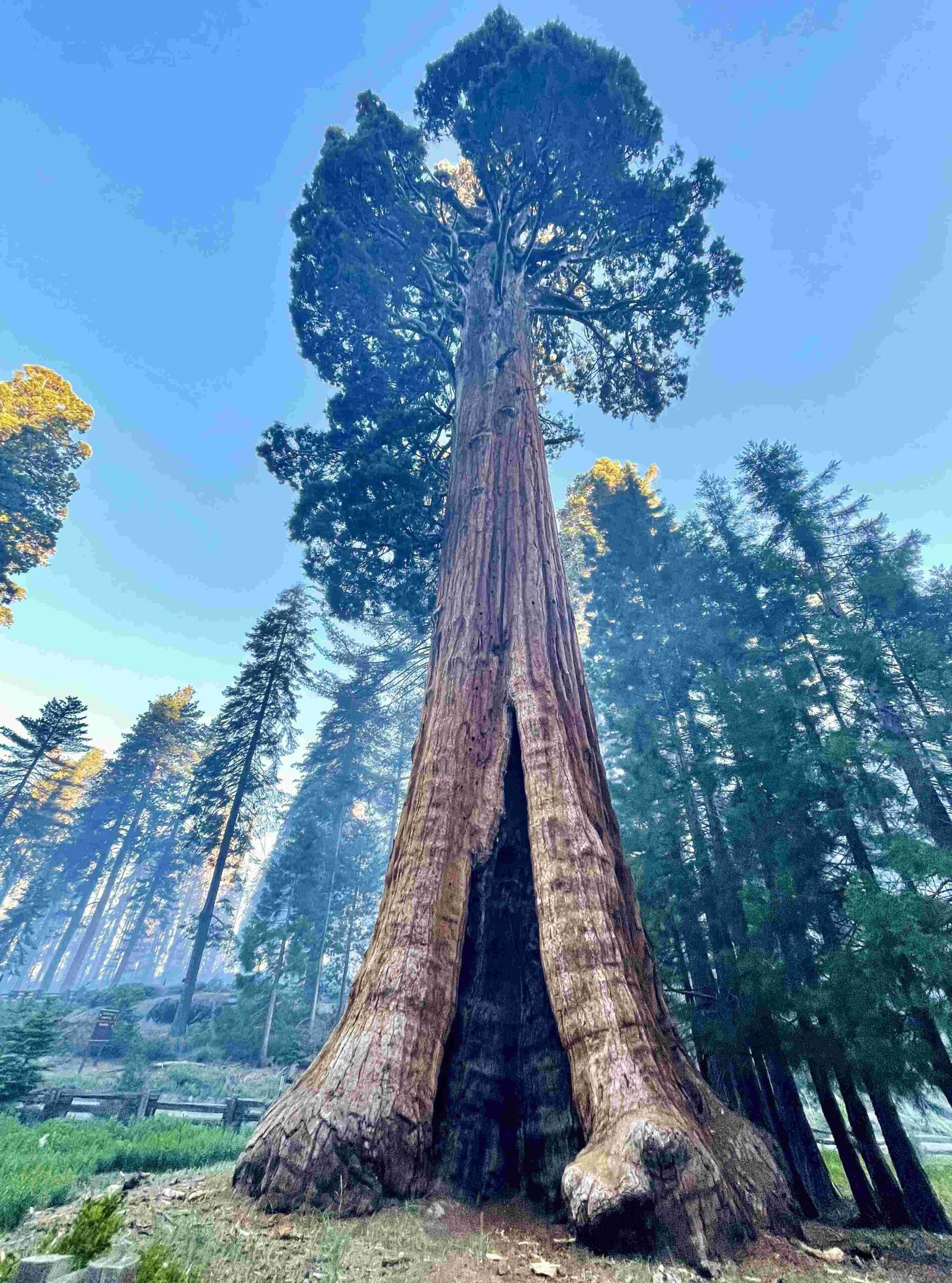The Fallen Monarch, located in the General Grant Grove of Kings Canyon National Park, California, is a testament to the enduring legacy of giant sequoias. This colossal tree, which fell over 300 years ago, has served various purposes throughout history. From a temporary home for homesteaders to a hotel, saloon, and even a stable for U.S. Cavalry horses, the Fallen Monarch has been a silent witness to the changing landscape of the park. Its resilience against decay, thanks to the high tanning content of sequoia wood, has preserved it as a unique attraction for visitors to explore and marvel at.
What is the Historical Significance of the Fallen Monarch?

The Fallen Monarch’s history is as rich and diverse as the forest it inhabits. Here’s a timeline of its notable uses:
- 1868: Discovered by Israel and Thomas Gamlin, Franco-Canadian homesteaders
- 1868-1870: Served as a hotel and saloon
- 1890-1914: Used as a stable for 32 horses of the U.S. Cavalry
This tree has played a crucial role in the early days of the national park, providing shelter and serving various community needs. Its ability to remain relatively unchanged for over a century is a testament to the durability of giant sequoia wood.
How Big Was the Fallen Monarch?

While exact measurements are scarce, we can paint a picture of the Fallen Monarch’s impressive size:
- Estimated Height: Approximately 125 feet (38.10 meters) when standing
- Age: Fell more than 300 years ago, placing it among the ancient trees of the grove
- Volume: Noted for its large volume, typical of giant sequoias
Although not as tall as some standing giants like the General Grant Tree, the Fallen Monarch’s massive trunk and hollowed-out interior make it a unique spectacle.
How Can Visitors Experience the Fallen Monarch?
Visiting the Fallen Monarch is a straightforward and accessible experience:
- Parking: Use the General Grant Tree parking lot near the Kings Canyon Visitor Center
- Trail: Follow the General Grant Tree Trail Loop
- Distance: Approximately 230 feet (70 meters) from the parking lot
- Difficulty: Easy walk on a paved, well-maintained trail
- Time: About 1 minute walk with minimal elevation change
Nearby attractions include:
– Gamlin Cabin
– General Grant Tree
– Kings Canyon Visitor Center
The visitor center offers maps, guides, and interpretive programs to enhance your understanding of the Fallen Monarch and its surroundings.
What Makes the Fallen Monarch Unique Among Sequoias?
The Fallen Monarch stands out for several reasons:
- Historical Uses: Unlike many fallen trees, it has served multiple purposes over centuries
- Accessibility: Visitors can walk through its hollowed trunk, offering a unique perspective
- Preservation: Its remarkable state of preservation allows visitors to see a snapshot of history
- Educational Value: Demonstrates the life cycle and resilience of giant sequoias
How Has the Fallen Monarch Impacted Park Management?
The Fallen Monarch has influenced park management in several ways:
- Conservation Efforts: Highlights the importance of preserving fallen trees in ecosystems
- Historical Interpretation: Provides a tangible link to the park’s early days and management
- Visitor Experience: Offers a unique attraction that complements the standing sequoias
- Research Opportunities: Allows scientists to study long-term decay processes in sequoias
What Can Visitors Learn from the Fallen Monarch?
The Fallen Monarch offers valuable lessons:
- Ecosystem Roles: Demonstrates how fallen trees continue to contribute to forest ecosystems
- Historical Perspective: Provides insight into early park history and human interaction with nature
- Sequoia Resilience: Showcases the durability and longevity of sequoia wood
- Natural Processes: Illustrates the natural life cycle of giant sequoias
How Does the Fallen Monarch Compare to Other Sequoia Attractions?
| Feature | Fallen Monarch | General Grant Tree | Other Standing Sequoias |
|---|---|---|---|
| Status | Fallen | Standing | Standing |
| Accessibility | Walk-through | View from outside | View from outside |
| Historical Use | Multiple (home, hotel, stable) | None | Varies |
| Age | Fell 300+ years ago | 1,650+ years old | Varies |
| Height | 125 feet (when standing) | 267 feet | Varies |
What Conservation Efforts Protect the Fallen Monarch?
To preserve this natural wonder:
- Visitor Management: Controlled access to prevent damage from foot traffic
- Environmental Monitoring: Regular checks for decay or environmental impacts
- Educational Programs: Informing visitors about the importance of fallen trees in ecosystems
- Research: Ongoing studies to understand long-term preservation of fallen sequoias
How Can Visitors Best Prepare for a Trip to See the Fallen Monarch?
To make the most of your visit:
- Timing: Visit early morning or late afternoon to avoid crowds
- Footwear: Wear comfortable walking shoes for the short trail
- Camera: Bring a wide-angle lens to capture the tree’s full scale
- Information: Stop by the visitor center for up-to-date information and guided tour schedules
- Respect: Follow all park guidelines to help preserve this natural wonder for future generations
The Fallen Monarch in Sequoia National Park stands as a testament to the enduring legacy of giant sequoias. Its rich history, from serving as a shelter for early settlers to becoming a unique attraction for modern visitors, showcases the multifaceted role these ancient trees play in our natural and cultural heritage. As you walk through its hollowed trunk, you’re not just exploring a fallen tree, but stepping into a living piece of history that continues to educate and inspire all who visit.
References:
1. The Historical Marker Database – The Fallen Monarch
2. Our National Parks – Fallen sequoias tell tales of park history
3. Famous Redwoods – Fallen Monarch Tree
